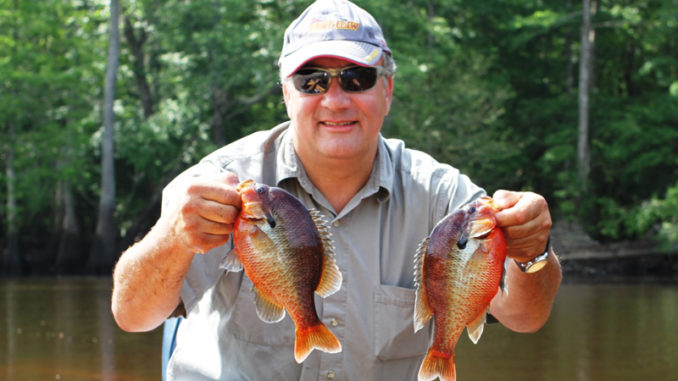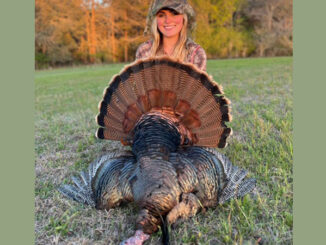
Local anglers gives tips for catching on live bait and artificials
Small rivers are often overlooked by anglers. But these miniature versions of waterways have some great fishing, no matter what species anglers are looking for. Lynches River is one such river. And panfish like redbreasts are one of the top fish sought by anglers here.
This is a body of water for small craft. Johnboats are popular here, but you’ll see plenty of canoes, kayaks, and small one-man boats on the water here too. Having an outboard is nice, but it is of far less importance than a trolling motor. And many anglers fish the old-fashioned way with paddles.
No matter what watercraft or propulsion method anglers use here, they can catch plenty of bream with small artificial lures or with live bait. And the best thing about fishing here, especially this time of year, is that there are very few places anglers can make a cast and not expect to get a bite.
Current breaks, incoming creeks, deep bends, rushing water, bank cuts, and weedy areas are all promising places to cast a lure or bait. And you can catch a variety of panfish. Bluegill, warmouth, shellcracker, and redbreast are the most common species. You’ll even happen across a crappie or two, and don’t be surprised if you hook a small bass as well.
The Hwy. 15 landing in Bishopville is one of the more modern and updated boat launches on this river. And it puts anglers in the middle of some hot fishing action. You’ll find plenty of downed timber throughout this river. And all of those are good spots to make a cast.
Fish the foam
“One of the most ignored types of structure here is the big collections of foamy substance that collects near downed trees and surface weeds. It’s not attractive. It looks kind of gross. And most anglers don’t want to get their line or baits in it. But fish stack up under this material. And they are quick to bite a live cricket or worm as soon as it sweeps under that gunk. The trick here is to let your cork float down to the foam. The foam will stop the cork from moving and your bait will keep going a little ways under the foam. You’ll usually get hit right there,” said Ernie Bowers of Rembert.
Bowers fishes the Lynches regularly, and said when he’s got plenty of time to fish, he uses live bait. When he’s just there for a quick trip, he likes to cast lures like Rebel’s micro series of crankbaits. The Wee Frog, Wee Craw, Crickhopper, and the Teeny Wee-R are all good bets. He fishes these lures with ultralight rod-and-reel combos, and 6-pound test line.
It’s similar to bass fishing
“It’s like bass fishing, and you can really get those tiny lures into some tight spots. It adds a lot of fun to catching bream, and it’s much less hassle than using live bait. I’ll take three or four rods with me, and have a different lure on each rod. And I’ll just switch back and forth,” he said.
“Fire Tiger is one of my favorite colors, and yellow is also good. When using these lures, I have my best luck in moving water, and behind structure breaks like downed trees or around bends. And anytime I see an incoming water source, no matter how big or small, I spend a lot of time fishing there. I will cast into that many, many times, and even if I cast 10 times without getting a bite, I’ll cast another 10 times, maybe more, because I’ve caught enough in those areas to know it’s worth it,” he said.
Click here to read about fishing for bream in the upstate with fly-fishing gear.




